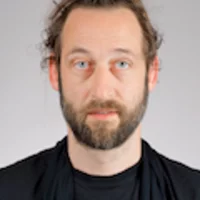Additive Manufacturing (AM) is a technology that produces three-dimensional parts layer by layer. A key concern in metal additive manufacturing is the density and structural integrity of a part formed. A great variety of processing parameters have influence on the final density, microstructure and residual stresses in a built part and, thus, they need to be optimized to avoid build failures such as porosity and cracks, but also geometrical distortions and faults of often complex structures as well as premature failure. Neutron imaging enables us to visualize and analyse such defects deep in the bulk of additively manufactured parts, which allows to optimize build conditions, inform and develop simulations as well as sensors for controlled printing processes and technologies.
We have recently characterized porosities in precious metals processed by AM, in particular Gold, where other non-destructive techniques fail, and could confirm successful printing strategies providing high density and sufficient material properties for jewelry industry [3] (Fig. 1). Our seminal micro-tomography equipment enables to resolve relevant pores formed during the manufacturing process.
During printing of components layer by layer, the spatially varied thermal cycles, that the material undergoes, result in the formation of thermal expansion mismatches causing significant residual stresses (RS). The RS impose high risks for the geometrical and mechanical integrity and sustainability of the components. Our advanced neutron imaging techniques provide tools to characterize RS in the bulk of built components and facilitate the optimization of the building conditions and treatment methods to minimize the RS. Furthermore, the, spatially varied, complex thermal history that the material undergoes results in complex microstructure and variations in the crystallographic texture. All these microstructural properties significantly affect the mechanical behavior of the AM components. The interplay of build parameters and material properties needs to be understood in order to tailor the process parameters to the materials and geometries that are built. In recent studies we have characterized in parametric studies the influence of build parameters such as laser energy, laser scan speed as well as support structures utilized for building specimen. In a similar study utilizing the potential to investigate whole sets of samples by full field imaging the effect of laser shock peening (LSP) as a post processing technique improving the near surface stress distributions as well as the novel 3D-LSP a hybrid technique of laser powder bed fusion (LPBF) and LSP developed by collaborators at EPFL, have been characterised successfully through multi-modal image analyses [1,2].
Publications
- Busi M, Kalentics N, Morgano M, Griffiths S, Tremsin AS, Shinohara T, R. Loge, C. Leinenbach, M. Strobl “A parametric neutron Bragg edge imaging study of additively manufactured samples treated by laser shock peening” Scientific Reports. 2021; 11(1): 14919
- Busi M, Kalentics N, Morgano M, Griffiths S, Tremsin AS, Shinohara T, R. Loge, C. Leinenbach, M. Strobl “Nondestructive characterization of laser powder bed fusion parts with neutron Bragg edge imaging” Additive Manufacturing. 2021; 39: 101848
- Ghasemi-Tabasi H, Trtik P, Jhabvala J, Meyer M, Carminati C, Strobl M, et al. ‘Mapping spatial distribution of pores in an additively manufactured gold alloy using neutron microtomography” Applied Sciences. 2021; 11(4): 1512
- Bacak M, Valsecchi J, Čapek J, Polatidis E, Kaestner A, Arabi-Hashemi A, I. Kruk, C. Leinenbach, A.M.Long, A.Tremsin, S.C. Vogel, E.B.Watkins, M. Strobl “Neutron dark-field imaging applied to porosity and deformation-induced phase transitions in additively manufactured steels” Materials and Design. 2020; 195: 109009
- Morgano M, Kalentics N, Carminati C, Capek J, Makowska M, Woracek R, T. Maimaitiyili, T. Shinohara, R. Loge, M. Strobl “Investigation of the effect of laser shock peening in additively manufactured samples through Bragg edge neutron imaging.Additive Manufacturing. 2020; 34: 101201.
Collaboration
- Prof. R. Loge EPFL
- Dr C. Leinenbach, EMPA
- Dr T. Shinohara, JPARC
Funding
- ETH Domain SFA-AM ‘MOCONT’
- ETH Domain SFA-AM ‘PREAMPA’
- SNSF SINERGA CRSII5_193799 /1
Associated junior researchers
- Dr. M. Busi, Dr. N. Kalentics, Dr. F. Malamud, S. Sumarli


![Additively manufactured gold cube [3]](/sites/default/files/styles/primer_full_image_xxl/public/2021-08/additive_manufacturing.png.webp?itok=M7ExZlFs)
![Figure 2: Multi-modal neutron imaging study of series of AM produced 316L austenitic stainless steel material with systematically varying build parameters [2]](/sites/default/files/styles/primer_full_image_xxl/public/2021-08/am_1.png.webp?itok=eAeTAok6)